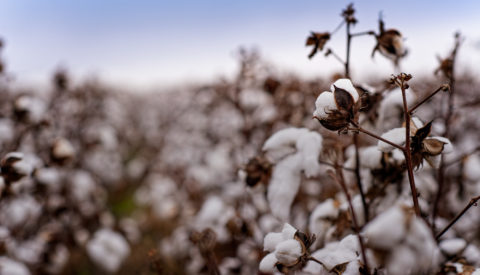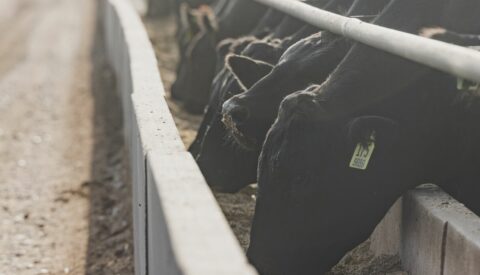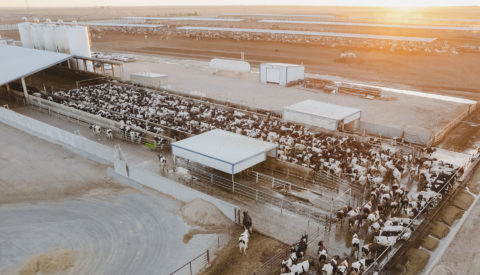The coronavirus (COVID-19) outbreak in the United States has had a significant impact on agriculture. From growers, processors, and handlers all the way to consumers in the grocery store, each step in the agricultural production process has been tested over the past year.
Few sectors have been as significantly impacted as the wine industry, which has experienced severe disruptions due to restaurant, bar, and tasting room closures following a historic season of wildfires in the Western U.S. that interfered with the fall harvest.
Revenue from agritourism also declined in 2020 as travelers stayed home. Analysis from Wines and Vines, and others, would indicate that total wine sales, in dollar terms, declined modestly while total volume sold increased slightly from a year ago. Moreover, in March the USDA reported a nearly 14 percent decline in the volume of grapes crushed and around a 16 percent decline in the average grape price compared to 2019.
While the pandemic has challenged us all, it’s also been inspiring to see the resilience of our agricultural producers and American AgCredit customers. There are several key lessons wine business operations can take away from 2020.
1. Access to liquidity is key
Many operations experienced a cash shortage in the summer months of 2020, as the pandemic closed local restaurants, bars, and tasting rooms across the United States.
As you plan for multiple business scenarios, it’s important to maintain strong reserves of capital. Some options to maintain liquidity include selling excess equipment, pushing through inventory at a discounted (but still profitable) price, or leveraging wine club memberships to build loyalty and strengthen sales.
Luckily, many local wineries were able to weather the storm and will benefit from broad vaccinations and the loosening of travel restrictions as conditions improve.
Spending on food and accommodation services has only recently recovered to pre-pandemic levels. However, net revenue measures for small businesses in the food and accommodation sectors still significantly lags behind spending before the pandemic. Net revenue measures may be lagging for a variety of reasons such as a bumpy reopening process, uneven capacity limits, overhead fixed costs, some stresses in input availability and prices, and labor issues.
Additionally, the consumer spending metric applies to purchases from all food and accommodation services whereas the net revenue metric only considers small businesses, perhaps indicating an additional mismatch in the reopening process.
2. E-commerce and direct to consumer are driving revenue
The pandemic has accelerated existing trends in the e-commerce and digital sales landscape. As people spent more time indoors for work and school, sales of wine on Amazon and other retail sites spiked. Last year, IWSR forecast that the value of U.S. alcohol e-commerce would increase by 42% over 2019.
Clearly, consumers want to buy products (including wine) online. Digital sales platforms and processes will be important areas for investment in the coming years, as consumers increasingly shop from the comfort of home.
3. Financial plans should be stress-tested
When developing a financial plan for your operation, it is important to consider the unexpected events that can test your operation’s liquidity and working capital. While no one could predict or plan for a global pandemic, there are steps you can take today to weather-proof your operation and maintain stronger reserves of capital.
As you develop budgets, consider the resilience of your operation in less-than-ideal circumstances. For example, how many months of cash do you have on hand to cover all fixed costs? What percentage of fixed costs vs. variable costs makes up your total expenses? What is your debt/equity position? Each of these items can be helpful to understand the flexibility your operation has to weather a downturn.
4. Stay informed and keep lines of communication open
We have heard from wine industry partners that one of the most valuable resources during the pandemic has been information. Staying informed is critical for success in a rapidly evolving situation and with shifting consumer shopping patterns. Reach out to your stakeholders, read the news, talk to growers and vendors about what they are experiencing, and stay engaged with your financial service providers and industry partners.
In 2020, we were all tested like never before. In agriculture, many producers were able to continue operating in spite of health orders that closed most other business activities. From the importance of liquidity and stress-testing your budgets to the value of digital sales and open communication, the past year has taught a number of lessons that can be leveraged for success in 2021 and beyond.
ADDITIONAL RESOURCES
Since 1916, American AgCredit has been improving the lives of farmers and ranchers with financial solutions designed to meet your operation’s needs. To learn more about how we serve the wine industry and support our customers, give us a call at 1-800-800-4865.
Disclaimer: This material is for informational purposes only and cannot be relied on to replace your own judgment or that of the professionals you work with in assessing the accuracy or relevance of the information to your own operations. This material is a compilation of outside sources and the various authors’ opinions.



